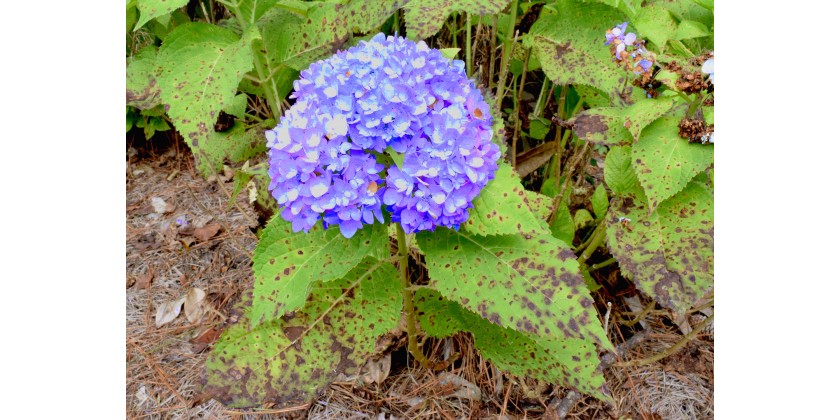
Leaf spot diseases affect the foliage of ornamentals and shade trees especially during the rainy season. The majority of leaf spots are caused by fungi, but some are caused by bacteria. The spots vary in size and color depending on the plant affected, the specific organism involved, and the stage of development. Spots are most often brownish, but may be tan or black. Fungal bodies may appear as black dots in the spots. Over time, the spots may combine or enlarge to form blotches. Leaf spot may cause different levels of defoliation of plants. Small or newly-planted plants that become defoliated suffer more severe damage than well-established plants.
If your plants developed fungal leaf-spot disease, you may follow the steps below to treat it:
1. Cut back the irrigation system to avoid prolonged wet periods that are ideal for spreading leaf spot diseases. Use soaker hoses or water early in the day so the foliage can dry off before night.
2. Rake up and dispose of infected leaves as they drop and prune out dead twigs to control the disease by removing spores that can re-infect the new leaves.
3. Thin out your plants to improve airflow through your plants. When it’s rainy or humid, the leaves don’t dry very well, and if any of spot-causing fungus is around, the damp conditions favor its growth. Early spring is a good time to remove up to one-third of the biggest, oldest stems throughout your plants.
4. Put down fresh mulch to discourage some of the dropped spores from splashing back up on the plant stems. Bark mulch and leaves are good choices. Compost is probably best for disease-fighting.
5. If the above-described steps do not stop or drastically reduce your leaf spot disease, try a fungicide. The key with any fungicide, though, is to get the spray on all the leaves before a disease flares out of control. That means use them preventively at the first signs of spotting. Some natural sprays that help are neem oil, a bacterial fungicide that contains Bacillus subtilis, or a homemade baking soda spray of one tablespoon of baking soda and one tablespoon of horticultural oil mixed well in a gallon of water.
For information on Solo Sprayers see: www.us.solo.global
